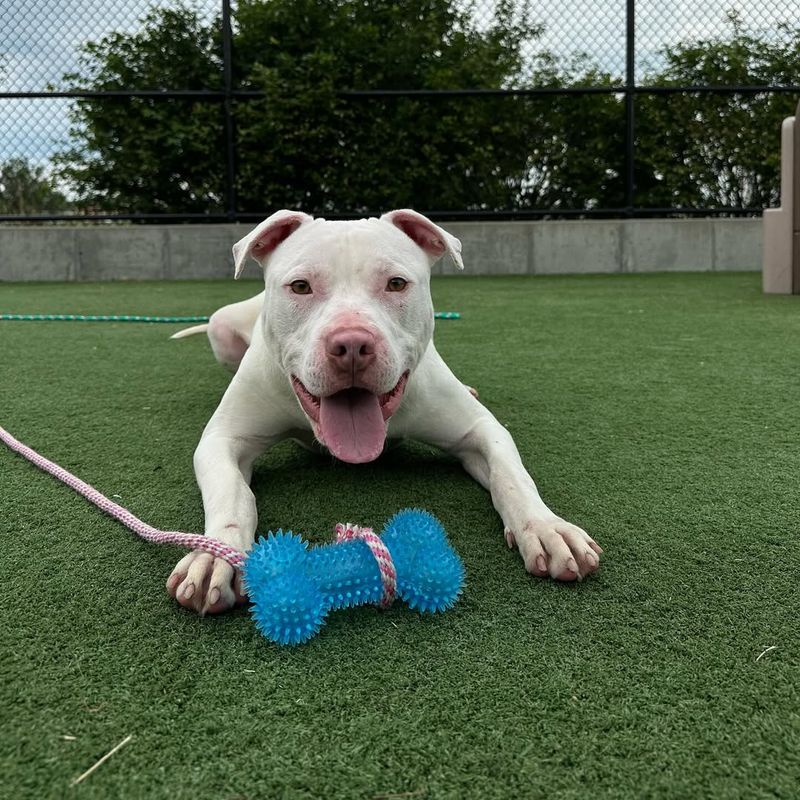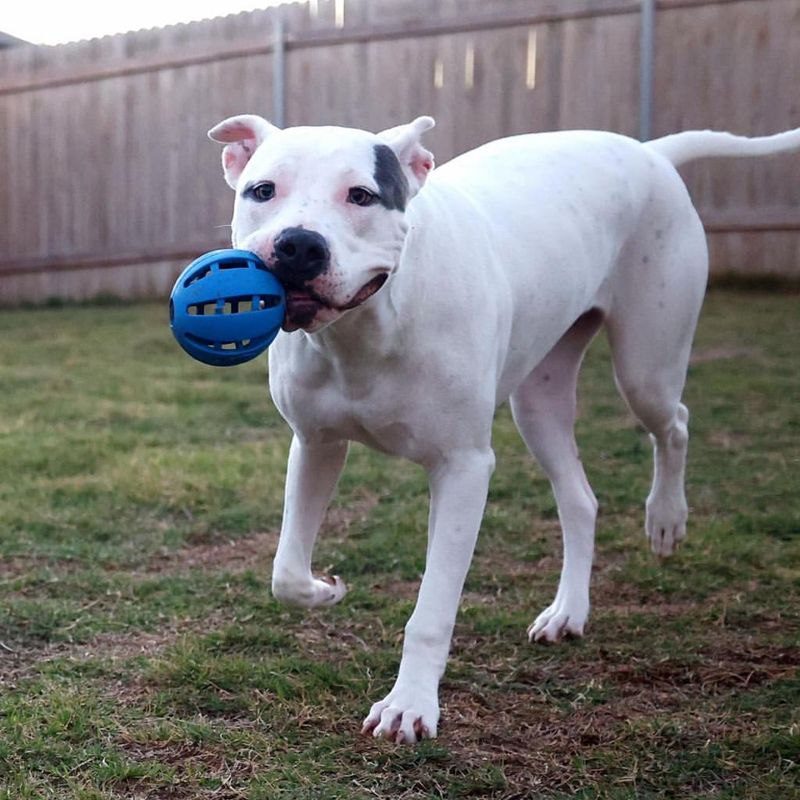11 Reasons Not To Adopt A Pitbull

The decision to adopt a pet is significant, and when it comes to Pitbulls, there are specific considerations to keep in mind. Pitbulls are undoubtedly loyal and energetic, but they may not be suitable for everyone.
This article explores the reasons that might make you reconsider adopting a Pitbull, focusing on aspects from energy levels to perception challenges. Whether you’re a seasoned pet owner or a first-time adopter, these insights will help you make an informed decision.
1. High Energy Levels

Imagine a whirlwind of energy embodied in a furry package—this is often what living with a Pitbull can feel like. These dogs are known for their vibrant and energetic nature, which can be overwhelming for some owners.
Pitbulls require a significant amount of physical activity to remain healthy and happy. Daily walks, playtime, and mental stimulation are non-negotiable. Without sufficient exercise, they might become restless or even destructive.
If your lifestyle is more sedentary, or if you lack the time to commit to daily exercise sessions, a Pitbull might not be the best match. Their energy levels are not suited for someone who prefers quiet, low-maintenance pets. Consider your own activity levels when deciding if a Pitbull is right for you.
2. Strong Prey Drive

Pitbulls are known for their strong prey drive, which stems from their breeding history. This instinctual behavior can lead to chasing small animals, posing a challenge for owners who have other pets or live in neighborhoods with small wildlife.
Managing this behavior requires consistent training and vigilance. Potential adopters must be prepared to invest time in obedience training and leash control to ensure safety.
For families with small pets or children, this trait might prove problematic. It’s crucial to recognize this natural instinct and decide whether you are equipped to manage it. Without proper management, a Pitbull’s prey drive can lead to stressful situations, both for the dog and other animals around.
3. Perception Issues

Public perception can heavily influence the experience of owning a Pitbull. Many areas have breed-specific legislation that bans or restricts Pitbulls due to their reputation, whether deserved or not.
This stigma can lead to challenges in housing, travel, and public interactions. Owners may face bias and judgment, which can affect their day-to-day life.
Understanding and accepting this aspect is essential. You need to be ready to advocate for your pet and possibly face uncomfortable situations. If you’re not prepared for the potential social hurdles, reconsidering a Pitbull might be wise. Despite their loving nature, overcoming perception issues requires resilience and commitment.
4. Training Commitment

Training a Pitbull can be both a rewarding and demanding process. This breed requires a strong commitment to training, given their intelligence and need for structure.
Without proper guidance, Pitbulls can develop behavior issues, making early and consistent training crucial. Positive reinforcement methods are particularly effective in bringing out their best traits.
Consider the time and effort you are willing to dedicate to training. A Pitbull thrives in an environment where clear rules and boundaries are established. If you lack patience or the resources to invest in comprehensive training, this breed might not be suitable for you.
5. Potential For Aggression

While many Pitbulls are gentle and affectionate, there is a potential for aggression in certain situations, often due to improper upbringing or lack of socialization.
Understanding this potential requires a commitment to early socialization and continuous training. Owners must be vigilant and proactive in identifying triggers and managing interactions with other animals and humans.
If the idea of dealing with potential aggression is daunting, it might be best to consider a different breed. Successfully managing a Pitbull requires understanding their temperament and investing in their behavioral development. This ensures a safe environment for both the dog and those around it.
6. Size And Strength

The physical strength of a Pitbull is undeniable. These dogs are muscular and robust, which can be challenging for some owners to manage, especially during walks or play.
Their size and strength require owners who can confidently handle them, ensuring safety for both the dog and others. This might include investing in proper harnesses and leashes that provide control.
If you feel uncertain about managing a strong dog, a Pitbull might not be the right choice. Their physical demands are best suited for individuals who understand and can handle their impressive strength.
7. High Maintenance Needs

Pitbulls are not low-maintenance pets. They require regular grooming, including brushing to keep their coat healthy and cleaning to prevent infections. This upkeep is crucial for their well-being.
In addition to physical grooming, Pitbulls need regular veterinary check-ups to monitor their health, given their predisposition to certain conditions. These responsibilities can be time and financially demanding.
Prospective owners must consider whether they have the resources to maintain their health and hygiene. If high maintenance is a concern, think twice before adopting a Pitbull. Their needs require commitment and attention to detail, ensuring they live a healthy, happy life.
8. Space Requirements

Space is a significant consideration when adopting a Pitbull. They are active dogs that thrive in environments where they have room to roam and play.
Living in a small apartment might not be ideal unless there is frequent access to outdoor spaces. The lack of space can lead to boredom and destructive behavior if their energy is not adequately channeled.
Evaluate your living situation honestly. If you reside in a cramped space without nearby parks or yards, a Pitbull may not be the best fit. Ensure you can meet their spatial needs to foster a harmonious living environment.
9. Medical Concerns

Like any breed, Pitbulls have specific health concerns to be aware of. Common issues include hip dysplasia and skin allergies, which require vigilant care and sometimes costly treatments.
Regular veterinary visits and proactive health monitoring are essential to manage these conditions effectively. Potential owners must be prepared for the possibility of unexpected medical expenses.
Understanding the breed’s health predispositions helps in making informed decisions. Consider whether you’re willing and able to invest in their long-term health care. If medical concerns are a significant worry, you might want to reconsider a Pitbull.
10. Travel Limitations

Traveling with a Pitbull can present unique challenges. Some airlines and accommodations have restrictions on the breed, complicating travel plans.
If you enjoy frequent travel, these limitations can become frustrating, requiring extra planning and potential alterations to your itinerary. Additionally, finding Pitbull-friendly accommodations may limit travel options.
Consider your lifestyle and how often you travel. If the idea of adjusting your plans to accommodate a Pitbull seems overwhelming, you might need to reassess. Traveling with this breed requires flexibility and advanced planning to ensure a smooth experience.
11. Insurance Challenges

Owning a Pitbull can impact your insurance coverage. Many homeowners’ and renters’ insurance policies have restrictions or increased premiums for certain breeds, including Pitbulls.
This can add financial strain and limit your insurance options. Ensuring you have adequate coverage while owning a Pitbull may require extensive research and possibly higher costs.
If navigating insurance challenges seems daunting, consider the potential implications before adopting. Understanding your policy and preparing for possible changes is crucial to avoid unexpected issues. Being informed ensures you make the right decision for your situation.






